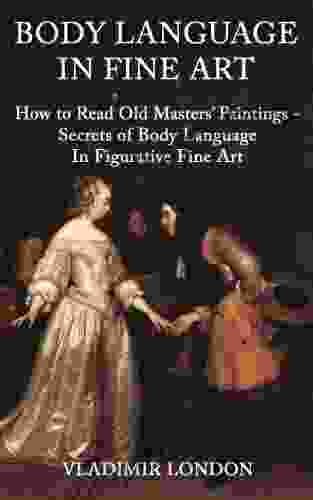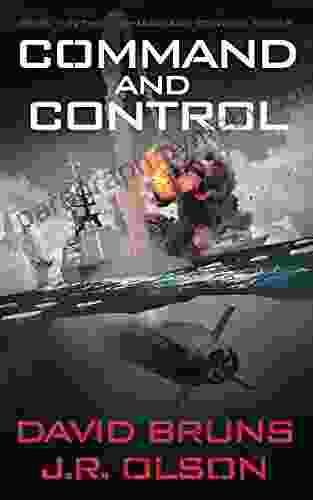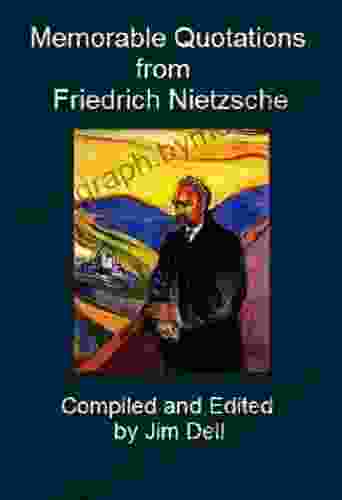Body Language In Fine Art: Unlocking the Silent Eloquence of Expression

: The Allure and Power of Nonverbal Communication
Throughout history, human beings have sought to communicate their innermost thoughts, feelings, and beliefs through various forms of expression. Among these, art has emerged as a potent medium, offering a unique window into the human psyche. Within the realm of fine art, body language plays a pivotal role, serving as a silent yet eloquent language that conveys a multitude of messages.
5 out of 5
| Language | : | English |
| File size | : | 2359 KB |
| Text-to-Speech | : | Enabled |
| Screen Reader | : | Supported |
| Enhanced typesetting | : | Enabled |
| Print length | : | 104 pages |
| Lending | : | Enabled |
Chapter 1: The Early Beginnings: Body Language as a Foundation of Artistic Expression
The origins of body language in fine art can be traced back to the earliest cave paintings and sculptures. In these prehistoric works, the human form was often depicted with exaggerated postures and gestures, serving to convey basic emotions and facilitate storytelling. As art evolved, so too did the sophistication of body language representation, becoming increasingly nuanced and expressive.
Chapter 2: The Classical Era: Body Language as a Symbol of Harmony and Idealization
During the classical era of Greece and Rome, body language in art reached new heights of refinement. Sculptors and painters sought to capture the ideal human form, characterized by perfect proportions and graceful movements. The body was seen as a symbol of harmony and beauty, reflecting the classical emphasis on rationalism and Free Download.
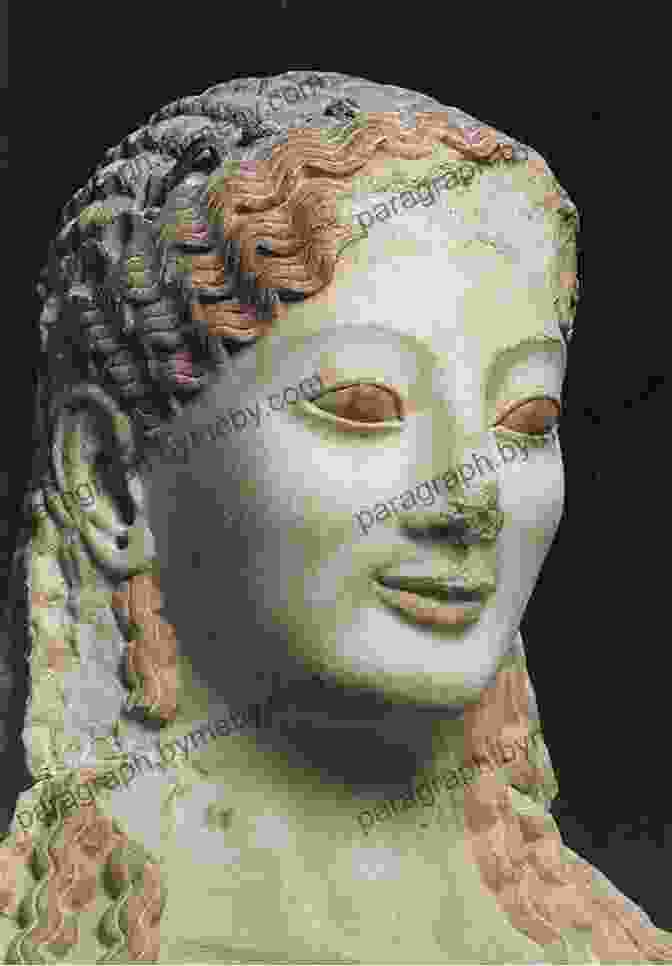
Chapter 3: The Medieval Period: Body Language as a Conveyance of Spirituality and Emotion
The medieval period witnessed a shift in the use of body language in art. With the rise of Christianity, the focus turned to expressing religious themes and emotions. Artists depicted biblical figures with exaggerated gestures and postures, conveying their inner turmoil and spiritual struggles. This period also marked the emergence of illuminated manuscripts, where intricate body language served to enhance the narrative and emotional impact of the text.
Chapter 4: The Renaissance: Body Language as a Tool for Storytelling and Humanism
The Renaissance brought about a renewed interest in classical art and humanism. Artists such as Leonardo da Vinci and Michelangelo studied human anatomy in great detail, enabling them to portray body language with unprecedented accuracy and expressiveness. Renaissance art is renowned for its dynamic compositions and vivid gestures, capturing the essence of human emotions and interactions.
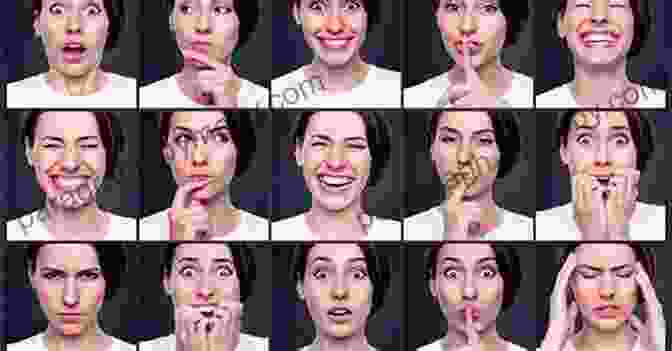
Chapter 5: The Baroque and Rococo Eras: Body Language as an Expression of Power and Grace
The Baroque and Rococo eras were characterized by their elaborate and theatrical styles. Body language in art took on a newfound importance, reflecting the opulence and grandeur of the period. Artists such as Bernini and Rubens used exaggerated gestures, dramatic postures, and flowing drapery to convey a sense of power and movement. This period also saw the emergence of portraiture as a major genre, where body language was used to reveal the character and status of the sitter.
Chapter 6: The 19th and 20th Centuries: Body Language as a Reflection of Societal Change
The 19th and 20th centuries witnessed significant societal changes, which were reflected in the use of body language in art. Romanticism emphasized emotional expression, while Realism depicted everyday life and human interactions with greater authenticity. Impressionism and Post-Impressionism focused on capturing fleeting moments and sensations, using body language to convey the subjective experiences of the artist.
Chapter 7: Contemporary Art: Body Language as a Medium for Identity and Social Commentary
In contemporary art, body language continues to play a vital role, but it has taken on new meanings and interpretations. Artists use body language to explore issues of identity, gender, race, and social justice. Performance art, installation art, and digital media have emerged as platforms for artists to engage with body language in innovative and thought-provoking ways.
: Body Language as an Enduring Force in Art
Throughout history, body language has been an integral part of artistic expression. It has evolved from its humble beginnings as a means of conveying basic emotions to becoming a sophisticated tool for exploring complex narratives, expressing cultural norms, and reflecting societal changes. By deciphering the silent language of body language in fine art, we gain a deeper understanding of human nature, history, and the enduring power of artistic expression.
5 out of 5
| Language | : | English |
| File size | : | 2359 KB |
| Text-to-Speech | : | Enabled |
| Screen Reader | : | Supported |
| Enhanced typesetting | : | Enabled |
| Print length | : | 104 pages |
| Lending | : | Enabled |
Do you want to contribute by writing guest posts on this blog?
Please contact us and send us a resume of previous articles that you have written.
 Book
Book Novel
Novel Page
Page Chapter
Chapter Text
Text Story
Story Genre
Genre Reader
Reader Library
Library Paperback
Paperback E-book
E-book Magazine
Magazine Newspaper
Newspaper Paragraph
Paragraph Sentence
Sentence Bookmark
Bookmark Shelf
Shelf Glossary
Glossary Bibliography
Bibliography Foreword
Foreword Preface
Preface Synopsis
Synopsis Annotation
Annotation Footnote
Footnote Manuscript
Manuscript Scroll
Scroll Codex
Codex Tome
Tome Bestseller
Bestseller Classics
Classics Library card
Library card Narrative
Narrative Biography
Biography Autobiography
Autobiography Memoir
Memoir Reference
Reference Encyclopedia
Encyclopedia Martha Myers
Martha Myers Jefferson Morley
Jefferson Morley Stephen Jay Gould
Stephen Jay Gould Ludwig Von Mises
Ludwig Von Mises Tee Wakes
Tee Wakes Kortney Clemons
Kortney Clemons Michele Leathers
Michele Leathers Julius B Fleming Jr
Julius B Fleming Jr Michael Mckinley
Michael Mckinley Jestina Campbell
Jestina Campbell Jean Pierre Isbouts
Jean Pierre Isbouts Stephanie Morales
Stephanie Morales Sky Marsen
Sky Marsen Timothy Phelps
Timothy Phelps Jenna Kernan
Jenna Kernan Phil Hornshaw
Phil Hornshaw Michael Loynd
Michael Loynd Ruby Ferguson
Ruby Ferguson Jeroen Mulder
Jeroen Mulder Michael R Czinkota
Michael R Czinkota
Light bulbAdvertise smarter! Our strategic ad space ensures maximum exposure. Reserve your spot today!

 Geoffrey BlairThe Kidnapping of Jessica Buchanan and Her Dramatic Rescue by SEAL Team Six
Geoffrey BlairThe Kidnapping of Jessica Buchanan and Her Dramatic Rescue by SEAL Team Six Bruce SnyderEdie: An American Girl by Jean Stein - A Captivating Journey into the Life of...
Bruce SnyderEdie: An American Girl by Jean Stein - A Captivating Journey into the Life of... Brady MitchellFollow ·6.3k
Brady MitchellFollow ·6.3k Rob FosterFollow ·11.1k
Rob FosterFollow ·11.1k Oliver FosterFollow ·4.3k
Oliver FosterFollow ·4.3k Juan RulfoFollow ·10.6k
Juan RulfoFollow ·10.6k Garrett BellFollow ·6.6k
Garrett BellFollow ·6.6k Nikolai GogolFollow ·9.3k
Nikolai GogolFollow ·9.3k Sidney CoxFollow ·11.5k
Sidney CoxFollow ·11.5k Ian McEwanFollow ·9.8k
Ian McEwanFollow ·9.8k
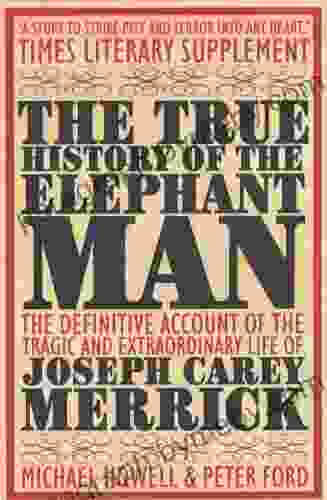
 Jeremy Mitchell
Jeremy MitchellUnveiling the Truth: The Captivating Saga of The Elephant...
Embark on a poignant journey through the...

 Marvin Hayes
Marvin HayesThe Day The World Came To Town: A Heartwarming Tale of a...
In the quaint...

 Hugh Bell
Hugh BellExplore the Avian Treasures of Wisconsin: A Review of...
Unveiling the Secrets of...
5 out of 5
| Language | : | English |
| File size | : | 2359 KB |
| Text-to-Speech | : | Enabled |
| Screen Reader | : | Supported |
| Enhanced typesetting | : | Enabled |
| Print length | : | 104 pages |
| Lending | : | Enabled |


